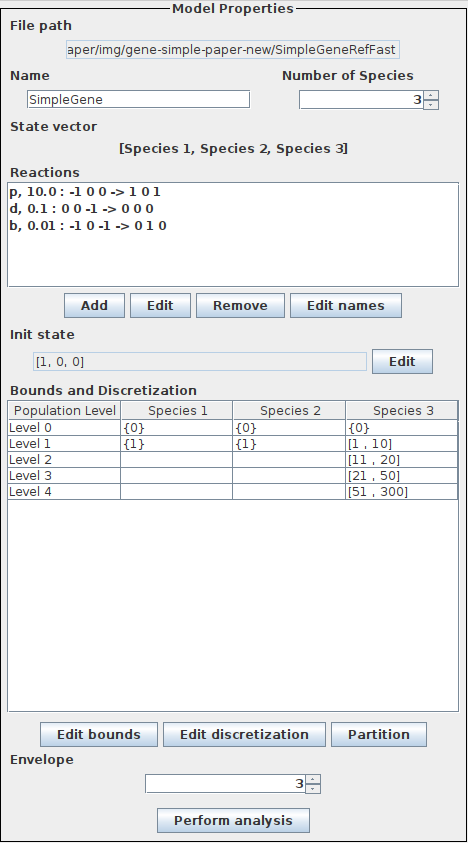Model properties
In the following we demonstrate the features of the tool with the simple gene expression model, which you can download here.
Open the model
Go the menu bar and select Open model in the Model menu. Then open the downloaded model.
Understanding the model properties
At the top of the Model properties panel you can change the model name and the number of species.

State vector: Displays which vector component corresponds to which species. In this case, the first component of the state vector corresponds to Species 1
Reactions: Displays the reactions of the chemical reaction network. In this example, the first reaction, named p, takes one unit of Species 1 and turns it into one unit of Species 2 and one unit of Species 3 with a rate of 10.0.
Init state: Displays the initial state of the system. In this case, the system starts with one unit of Species 1, zero units of Species 2 and zero units of Species 3.
Bounds and Discretization: SeQuaiA does not work with the actual system but with an abstraction of the system. The abstraction considers population intervals, namely the population levels. In this example, we see that population level Level 1 of Species 1 is the singleton {1}. For Species 3, Level 1 corresponds to the interval [1,10]. A vector [0,0,1] would thus correspond to a state where we have 0 units of Species 1, 0 units of Species 2 and 1 to 10 units of Species 10.
Envelope: The envelope essentially determines how many transitions we want to consider. If the envelope is set to 0, we will only consider the fastest transitions in each state. Thus, by increasing the envelope we consider more transitions with smaller rates. The envelope is useful for studying less probable behaviors of the system and for countering non-determinism.